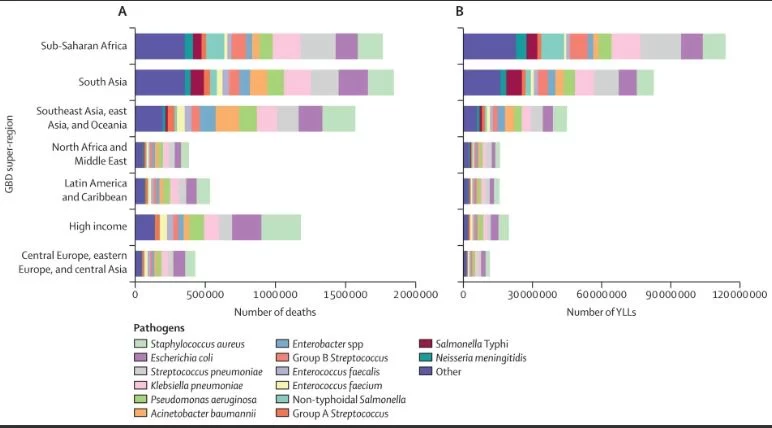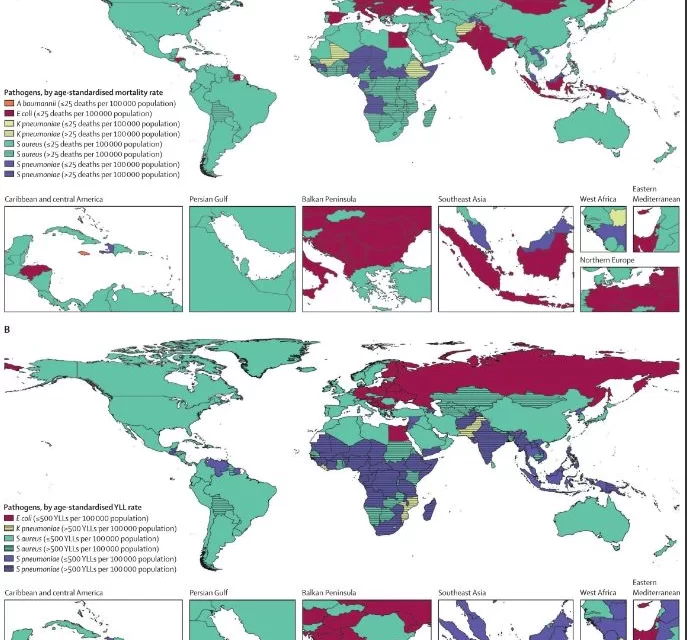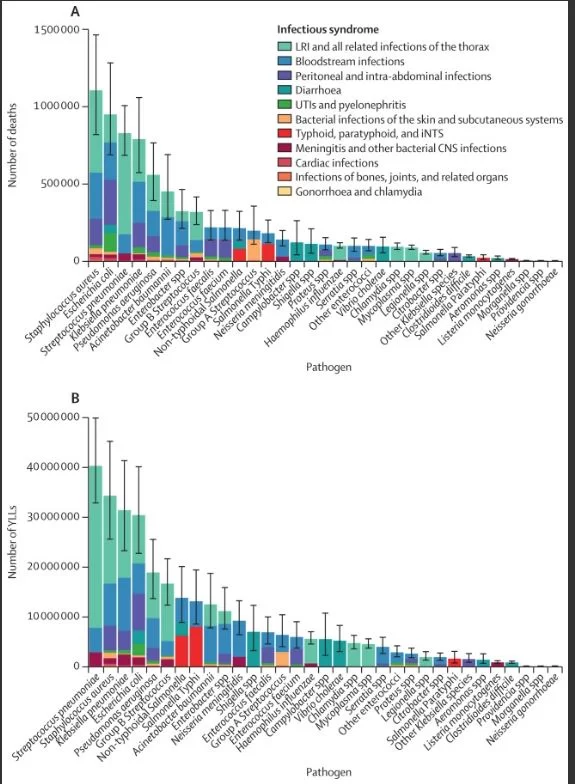
Background: Reducing the burden of death due to infection is an urgent global public health priority. Previous studies have estimated the number of deaths associated with drug-resistant infections and sepsis and found that infections remain a leading cause of death globally. Understanding the global burden of common bacterial pathogens (both susceptible and resistant to antimicrobials) is essential to identify the greatest threats to public health. To our knowledge, this is the first study to present global comprehensive estimates of deaths associated with 33 bacterial pathogens across 11 major infectious syndromes.

Findings: From an estimated 13·7 million (95% UI 10·9-17·1) infection-related deaths in 2019, there were 7·7 million deaths (5·7-10·2) associated with the 33 bacterial pathogens (both resistant and susceptible to antimicrobials) across the 11 infectious syndromes estimated in this study. We estimated deaths associated with the 33 bacterial pathogens to comprise 13·6% (10·2-18·1) of all global deaths and 56·2% (52·1-60·1) of all sepsis-related deaths in 2019. Five leading pathogens-Staphylococcus aureus, Escherichia coli, Streptococcus pneumoniae, Klebsiella pneumoniae, and Pseudomonas aeruginosa-were responsible for 54·9% (52·9-56·9) of deaths among the investigated bacteria. The deadliest infectious syndromes and pathogens varied by location and age. The age-standardised mortality rate associated with these bacterial pathogens was highest in the sub-Saharan Africa super-region, with 230 deaths (185-285) per 100 000 population, and lowest in the high-income super-region, with 52·2 deaths (37·4-71·5) per 100 000 population. S aureus was the leading bacterial cause of death in 135 countries and was also associated with the most deaths in individuals older than 15 years, globally. Among children younger than 5 years, S pneumoniae was the pathogen associated with the most deaths. In 2019, more than 6 million deaths occurred as a result of three bacterial infectious syndromes, with lower respiratory infections and bloodstream infections each causing more than 2 million deaths and peritoneal and intra-abdominal infections causing more than 1 million deaths.
Interpretation: The 33 bacterial pathogens that we investigated in this study are a substantial source of health loss globally, with considerable variation in their distribution across infectious syndromes and locations. Compared with GBD Level 3 underlying causes of death, deaths associated with these bacteria would rank as the second leading cause of death globally in 2019; hence, they should be considered an urgent priority for intervention within the global health community. Strategies to address the burden of bacterial infections include infection prevention, optimised use of antibiotics, improved capacity for microbiological analysis, vaccine development, and improved and more pervasive use of available vaccines. These estimates can be used to help set priorities for vaccine need, demand, and development.

Link to Study https://www.thelancet.com/journals/lancet/article/PIIS0140-6736(22)02185-7/fulltext













